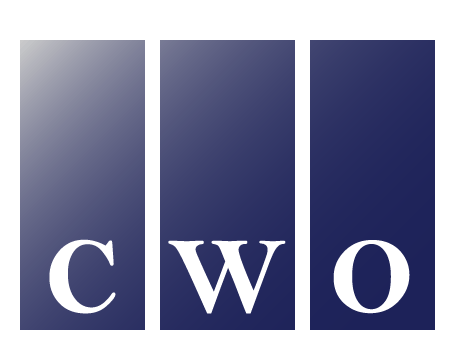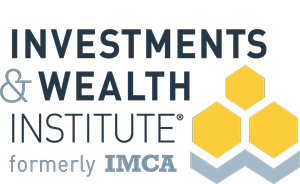
By Cliff O’Conner, Financial Advisor
As a small business owner, you are responsible for every aspect of your company – establishing business goals, managing operations, and developing solutions to achieve those goals. But have you devoted any time to mapping out your retirement plan?
Since you are working for yourself, you’re responsible for choosing and funding a retirement plan. There are multiple options for small business owners. Most people are familiar with employer-sponsored 401(k)s. But did you know that there are 401(k) plans and other options that are specifically for entrepreneurs?
In our experience, there are three common retirement plan options for small business owners. We can help you understand the requirements and tax advantages for each plan to determine which one is best for your business and retirement goals.
1. Self-Employed 401(k)
Table of Contents
- 0.0.1 Who’s the Solo 401(k) for?
- 0.0.2 How does a Self-Employed 401(k) work?
- 0.0.3 Pros of a Solo 401(k)?
- 0.0.4 Self-Employed 401(k) Contribution Limits 2020
- 0.0.5 What else should I know?
- 0.0.6 Who’s the SEP-IRA for?
- 0.0.7 How a SEP-IRA work?
- 0.0.8 Pros of Using a SEP-IRA
- 0.0.9 SEP-IRA Contribution Limits for 2020
- 0.0.10 What else should I know?
- 0.0.11 Who’s the SIMPLE-IRA for?
- 0.0.12 How a SIMPLE-IRA work?
- 0.0.13 Pros of Using a SIMPLE-IRA plan?
- 0.0.14 Contribution Limits for SIMPLE-IRA in 2020
- 0.0.15 What else should I know?
- 1 Download our 2025 Financial Planning Guide
Who’s the Solo 401(k) for?
This plan is only available to small business owners of sole proprietorships or corporations and their spouses who are employed by the company. You cannot have this type of account if you have any other employees beyond your spouse.
How does a Self-Employed 401(k) work?
You can set up a Self-Employed 401(k) to operate like a traditional 401(k) or as a Roth 401(k). If you choose a traditional Self-Employed 401(k), contributions are made pre-tax and qualified distributions are taxed as ordinary income. If you set up a Roth 401(k), your contributions are made on an after-tax basis and qualified distributions are tax-free.
Pros of a Solo 401(k)?
What’s beneficial about this type of account is that you can build it up quickly by contributing as both the employee and the employer. Additionally, your spouse can contribute to the plan if they are an employee.
Self-Employed 401(k) Contribution Limits 2020
As the employee, for the year 2020, you can contribute up to $19,500, or $26,000 if you are age 50 or older. As the employer, you can allot an additional 25% of compensation, up to a $57,000 maximum, or $63,500 maximum if age 50 or older. Note that the total combined contributions as employee and employer cannot exceed the $57,000 threshold, or $63,500 threshold if you are age 50 or older.
The contributions by a spouse and on their behalf also are capped at $57,000, or $63,500 if age 50 or older, allowing for total contributions of $114,000 per household (or $127,000 if both are age 50 or older), if both individuals are employed by the company.
What else should I know?
If you plan on hiring employees in the future, you may need to choose another retirement plan option. You’ll pay a 10% penalty if you take out funds prior to turning 59 ½ and an annual Form 5500 is required once the plan assets are in excess of $250,000.
2. Simplified Employee Pension (SEP) IRA
Who’s the SEP-IRA for?
Businesses of any size can establish SEP-IRA plan. Many sole proprietors or small business owners with a handful of employees choose to use this type of account.
How a SEP-IRA work?
Only an employer can contribute to this type of account. As the owner, you are counted as an employee.
Pros of Using a SEP-IRA
You can make substantially higher contributions to a SEP IRA as compared to a traditional IRA. (For 2020, the traditional IRA limit is $6,000, or $7,000 if you are age 50 or older.) Because there is no set amount you must contribute, you can adjust this amount annually based on the cash flow of your business.
SEP-IRA Contribution Limits for 2020
The employer can contribute up to 25% of the employee’s eligible compensation or up to $57,000 for 2020. Compensation for the owner is calculated as net earnings on self-employment minus one-half of your self-employment tax and contributions to your own SEP IRA.
Contributions must be made by the small business owner’s tax filing deadline, and the contributions are tax deductible.
Catch-up contributions are not permitted with this type of plan.
What else should I know?
If you offer this account to any employee other than yourself, you must contribute the same percentage of compensation to each account. Also, if you withdraw money before turning 59 ½, you’ll pay a 10% penalty.
There is no annual Form 5500 filing required for a SEP IRA.
3. Savings Incentive Match Plan for Employees (SIMPLE) IRA
Who’s the SIMPLE-IRA for?
This plan is used by small businesses with 100 employees or less that don’t currently offer other retirement benefits to employees.
How a SIMPLE-IRA work?
A SIMPLE IRA is like a traditional 401(k) account in that both the employer and employees contribute to the employee’s account. Employers are required to match employee contributions, up to 3% of the employee’s pay, or an employer can contribute 2% of the employee’s salary, regardless of employee participation in the plan. You’ll pay taxes on the money when you withdraw it during retirement. A SIMPLE IRA cannot be a Roth IRA.
Pros of Using a SIMPLE-IRA plan?
Employer contributions are tax deductible and employee contributions are made pre-tax.
Contribution Limits for SIMPLE-IRA in 2020
Employee contributions to a SIMPLE IRA are capped at $13,500 a year in 2020 ($16,500 if you are 50 or older).
What else should I know?
This plan is best for businesses with a larger number of employees, so if you know you’ll be the only employee, or will only have a couple of employees, consider choosing a Self-Employed 401(k) or SEP IRA instead. Those plans also have higher contribution limits.
If you need access to money in the fund within two years of opening the account and you are under age 59 ½, you may pay a 25% penalty. After two years, if you withdraw money before age 59 ½, you’ll pay a 10% penalty fee, the same as a Self-Employed 401(k) and SEP IRA.
There is no annual Form 5500 filing required for a SIMPLE IRA.
As you can see, there are many options for small business owners to fund their retirement. Even if you have investments elsewhere, it may be beneficial to have one of these accounts for the tax advantages. In addition, offering an employer-sponsored retirement plan is one way to attract and retain top talent within your company.
It is important to note that all contributions discussed here are based on 2020 limits and could change each year.
Cliff O’Conner is the founder and president of C.W. O’Conner Wealth Advisors, Inc. He provides creative solutions in investment management, wealth management and business services to business owners, executives, individuals and their families. If you would like to discuss retirement plan options, contact Cliff at [email protected] or call him directly at 770-368-9919.
Download our 2025 Financial Planning Guide








